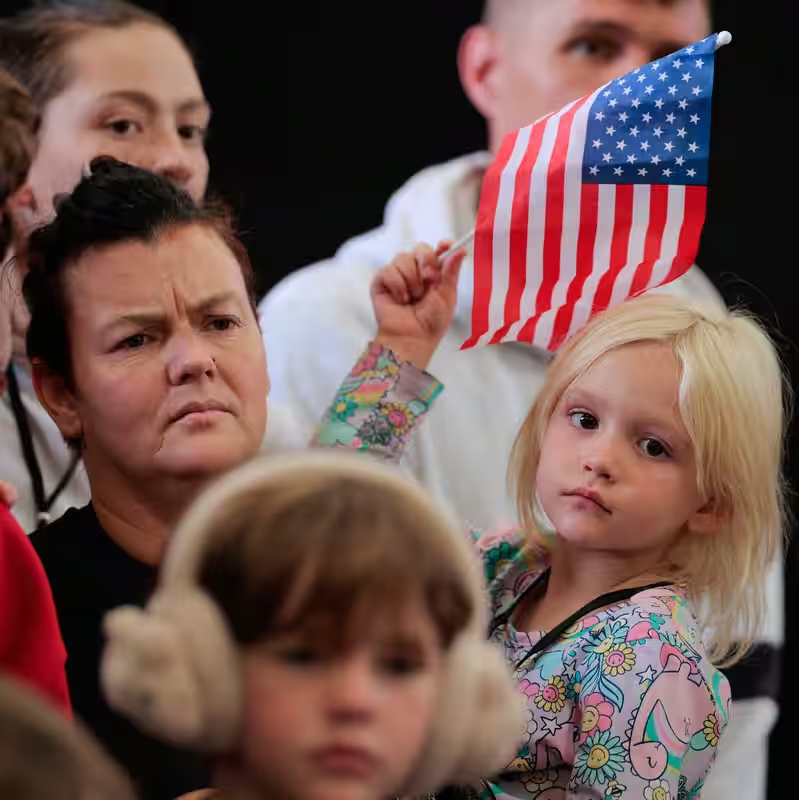Washington, D.C., October 16, 2025 — Former President Donald Trump is advancing a controversial proposal to overhaul the U.S. refugee resettlement system—one that would shift focus away from the world’s most vulnerable populations and instead prioritize white foreigners who claim political or religious persecution.
According to internal documents and sources familiar with the plan, the proposed changes would fundamentally alter a decades-old humanitarian program rooted in post-World War II ideals of protecting those fleeing war, torture, and systemic oppression.
Refugee System Overhaul Targets “Persecuted” White Minorities
Under the new framework being developed by Trump allies, the U.S. would give preference to applicants from majority-nonwhite countries who identify as white or Christian—particularly those from South Africa, parts of Latin America, and Eastern Europe—who allege discrimination or threats from majority populations.
“The idea is to help people who are being targeted for their race, faith, or political beliefs—even if they don’t come from a war zone,” said a senior policy advisor close to Trump’s 2026 campaign, speaking on condition of anonymity.
Critics argue the plan redefines “refugee” in a way that contradicts both U.S. law and international norms. The 1951 Refugee Convention defines a refugee as someone with a “well-founded fear of persecution” due to race, religion, nationality, political opinion, or membership in a particular social group—but historically, U.S. admissions have prioritized individuals from active conflict zones like Syria, Sudan, and Myanmar.
From Humanitarian Mission to Ideological Filter
The proposed shift has alarmed human rights organizations, immigration lawyers, and former government officials.
“This isn’t about helping the persecuted—it’s about cherry-picking who ‘deserves’ refuge based on skin color and ideology,” said Lena Torres, director of the Refugee Advocacy Project.
Data from the U.S. State Department shows that in 2024, over 70% of admitted refugees came from Africa and the Middle East. Under Trump’s proposed system, that balance could flip dramatically.
What Would Change Under Trump’s Plan?
The plan includes several key policy shifts:
- New eligibility criteria: Emphasis on “cultural compatibility” and English proficiency.
- Geographic realignment: Reduced quotas from Africa and Asia; increased slots for Eastern Europe and white South Africans.
- “Persecution” redefined: Includes claims of “anti-white” or “anti-Christian” sentiment, even without state involvement.
- Faster processing: Expedited pathways for applicants with conservative political views or ties to U.S.-aligned groups.
Historical Context and Legal Concerns
This isn’t the first time Trump has sought to reshape immigration along racial lines. His 2017 “travel ban” targeted majority-Muslim nations, and his administration slashed refugee admissions to historic lows—down to just 15,000 in FY2021, the lowest cap since the program began in 1980.
Legal experts warn the new proposal may violate the Immigration and Nationality Act, which prohibits discrimination in visa issuance based on race, sex, nationality, place of birth, or place of residence.
“You can’t legally build a refugee system that favors white applicants,” said Professor David Kim, an immigration law scholar at Georgetown. “It’s not just unethical—it’s unconstitutional.”
Political Fallout and Public Reaction
The plan has already ignited fierce debate. Progressive lawmakers have called it “state-sanctioned racism,” while some conservative commentators defend it as “protecting Western civilization.”
A recent poll shows 58% of Americans oppose changing the refugee system to favor specific racial or ethnic groups—even if they claim persecution.
| Current U.S. Refugee Admissions (2024) | Proposed Shift Under Trump Plan |
|---|---|
| Africa: 42% | Africa: <15% |
| Middle East: 28% | Middle East: <10% |
| Asia: 18% | Asia: <5% |
| Europe/Latin America: 12% | Europe/Latin America: >70% |
[INTERNAL_LINK:U.S.-Immigration-Policy] remains one of the most divisive issues in American politics—and this proposal could redefine it for a generation.




